In Issue #115 of Singletrack Magazine, Wil and the team tested and reviewed eight powerful trail brakes.
As part of the test process, we took all eight brakes down to Wales for three solid days of back-to-back testing on the slatey, unforgiving, high-speed trails of Antur Stiniog. Each brake was set up with 180mm rotors front and rear, and we left the hoses uncut to ensure the factory bleed was retained. Once we’d had sufficient comparative test time on all the brakes in a controlled environment, we then returned to Calderdale to continue testing each brake individually on more familiar home trails.
At the end of testing, we had four awards to hand out, including Best Engineered, Easiest To Live With, Best Feel, and Best Overall.
Winner Of Best All Round Disc Brake: SRAM Code RSC
Out of our disc brake group test, the SRAM Code RSC brakes are the newest of the lot. Unveiled earlier this year, the redesigned Code comes off the back of the success of SRAM’s latest Guide and Level brakes. But whereas the Level is designed for cross-country, and the Guide is built for trail riding, the Codes are beefed up to be an all-powerful, all-conquering brake for downhill and heavy-duty alpine use.
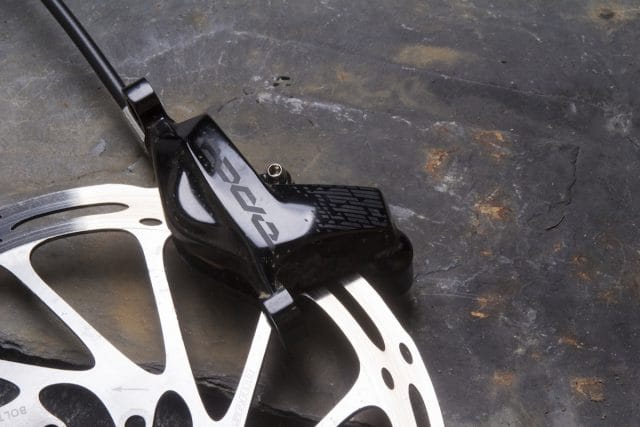
SRAM Code RSC Specifications
- Quad-piston calliper brakes for Trail/All Mountain/Downhill use
- Lever blade: Forged alloy
- Lever body: Forged alloy
- Ambidextrous: Yes
- Adjustments: Tool-free lever reach & pad contact
- Callipers: Forged alloy quad-piston
- Piston diameter: 15/16mm
- Piston material: Phenolic
- Stock pad compound: Steel-backed metal sintered (organic available separately)
- Fluid: DOT 5.1
- Rotor options: 160, 180, 200mm sizes in a 6-Bolt pattern (£43 per end)
- Actual weight: 354g (front) & 359g (rear)
- RRP: £229 per end (without rotors and adapters)
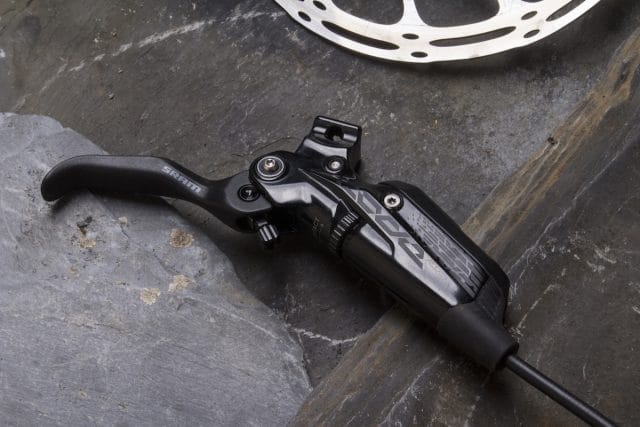
Setting Up
And in essence, the Codes are just a more powerful version of the Guides. Compared to the Guide’s 14/16mm piston combo, the Codes get chunkier callipers packed with 15/16mm diameter pistons to increase stopping force by a claimed 15%.
The levers are bigger too, holding 30% more fluid volume thanks to the piggyback reservoir. According to SRAM, this added fluid volume and an expandable rubber membrane means the Codes possess a greater ability to compensate for fluid expansion as the oil heats up. In a way, it’s kind of like a piggyback reservoir on a rear shock.
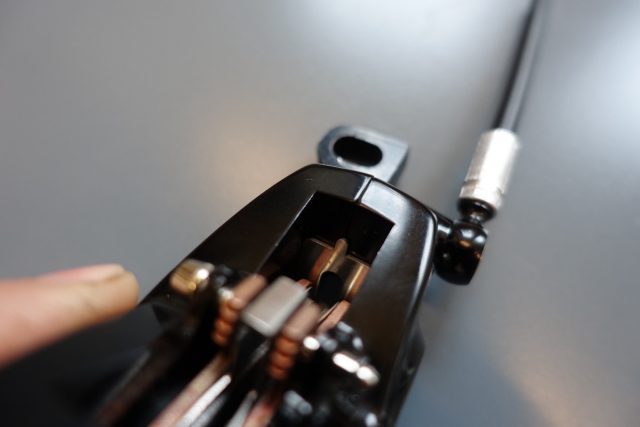
The aim here is to keep the lever feel, bite point and power feeling consistent from the top of the mountain, all the way to the bottom. As such, the stock pads use a sintered metallic compound to resist fade, and a discreet stainless steel heat shield is tucked into the leading edge of the brake pads to strip heat away from the calliper body and the DOT 5.1 oil within. Likewise, the open top-loading design helps to increase air flow over the pads, while phenolic pistons assist with insulating the calliper body from heat generated by the pads and rotor.
As with other SRAM brakes, the lever bodies are ambidextrous and you have the choice of mounting the levers to your bars with a separate clamp, or paired up with a SRAM shifter and Reverb remote via the MatchMaker X system. Lever reach and pad contact can be adjusted without tools, but while they’re effective adjustments, we found both dials were fiddly, and occasionally jammed up on us.
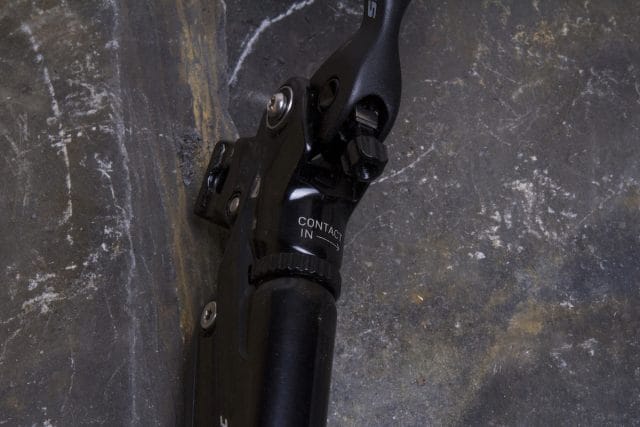
On The Trail
The Code RSC’s secret weapon is the SwingLink arm that connects the lever to the main lever piston. Using a small cam profile not unlike Shimano’s Servo Wave design, the SwingLink alters the effective leverage that the lever has over the piston. And it’s this feature that we’d argue is the Code RSC brake’s biggest virtue. Yes, it has bucketloads of power, as you’d expect of a brake designed to cope with World Cup downhill racecourses. And, yes, it remains consistent, even on big mountain descents that’ll have your rotors leaving a permanent mark on any exposed skin that accidentally comes in contact with them. But it’s the modulation and control of that power that we found most impressive with the Codes.
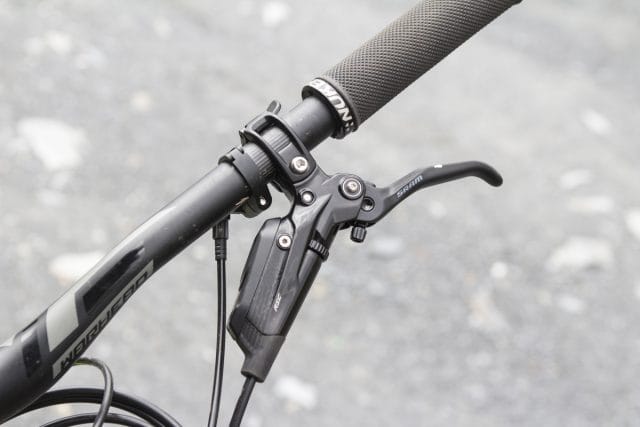
In fact for the most part, there really is little difference in feel between the Guide brakes and the Codes. Thanks to a sealed bearing pivot, the lever maintains that same silky-smooth stroke, and the hooked lever blade was unanimously praised by all testers. Once the pads engage, the bite point feels positive, and there’s plenty of lever feedback as you transition through a usable range of modulation, before reaching the Code’s gut-churning power deeper into the lever stroke. Gut-churning power that always feels easy to access when you want to.
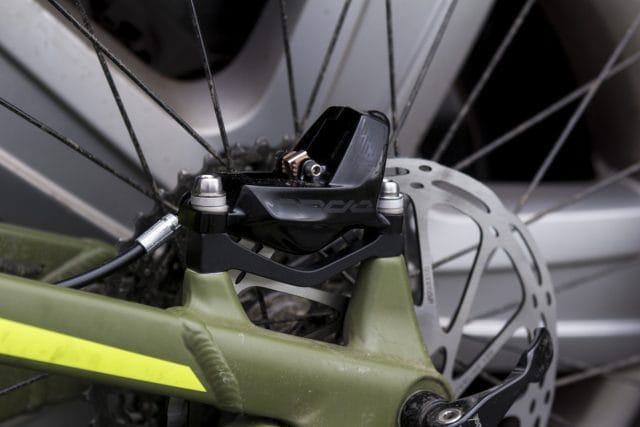
Most telling was that all of our testers felt immediately comfortable with the Codes. They’re intuitive and predictable, and very easy to control from the first ride. Whether they were being used on cross-country trails on a lightweight hardtail, or on flat-out downhill trails with long-travel enduro bikes, the Codes never felt grabby or off-putting.
While the Codes aren’t quite as powerful as the Trickstuff brakes, or as pretty as the Hopes, or as foolproof to set up as the Shimano Zees, it’s their combination of lever feel, modulation and ease of use that contributed to them taking the Best All Round title in our group test. They perform well across the board, and the wide availability of spare parts (pads, rotors, service kits, DOT fluid etc) and the ability to have them serviced and bled in most corners of the globe are all contributing factors.
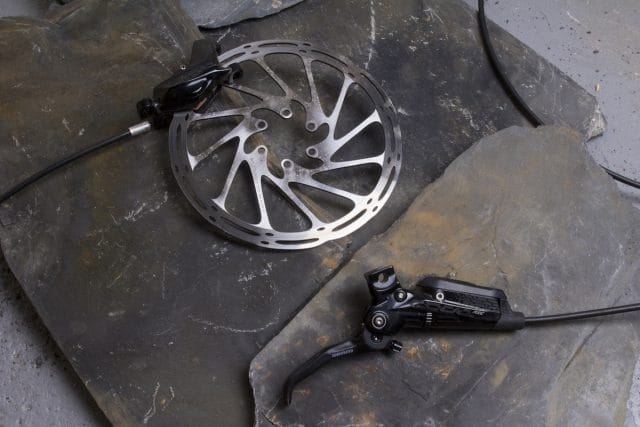
Overall
With the latest Code, SRAM has created a brake that combines impressive power with even more impressive modulation. It’s kind of like a Guide on steroids, albeit one that feels more solid and consistent all-round. Combined with the Code’s excellent lever feel and fine-tune control, this is far more than just a downhill-only brake.
For our group test, we tested eight brakes in total. Some were outstanding in certain areas, and others performed well across the board. But with just four awards up for grabs, that left four remaining brakes that narrowly missed out on the glory. To see how those other brakes performed, hit the following links;
Magura MT Trail Carbon Brake Review
BFO H2O Brake Review
FSA Afterburner Brake Review
TRP G-Spec Slate Brake Review
Review Info
| Brand: | SRAM |
| Product: | Code RSC |
| From: | ZyroFisher, zyrofisher.co.uk |
| Price: | £229 per end (rotors & adapters sold separately) |
| Tested: | by Wil Barrett for 5 months |
Comments (3)
Leave Reply
Post Comment
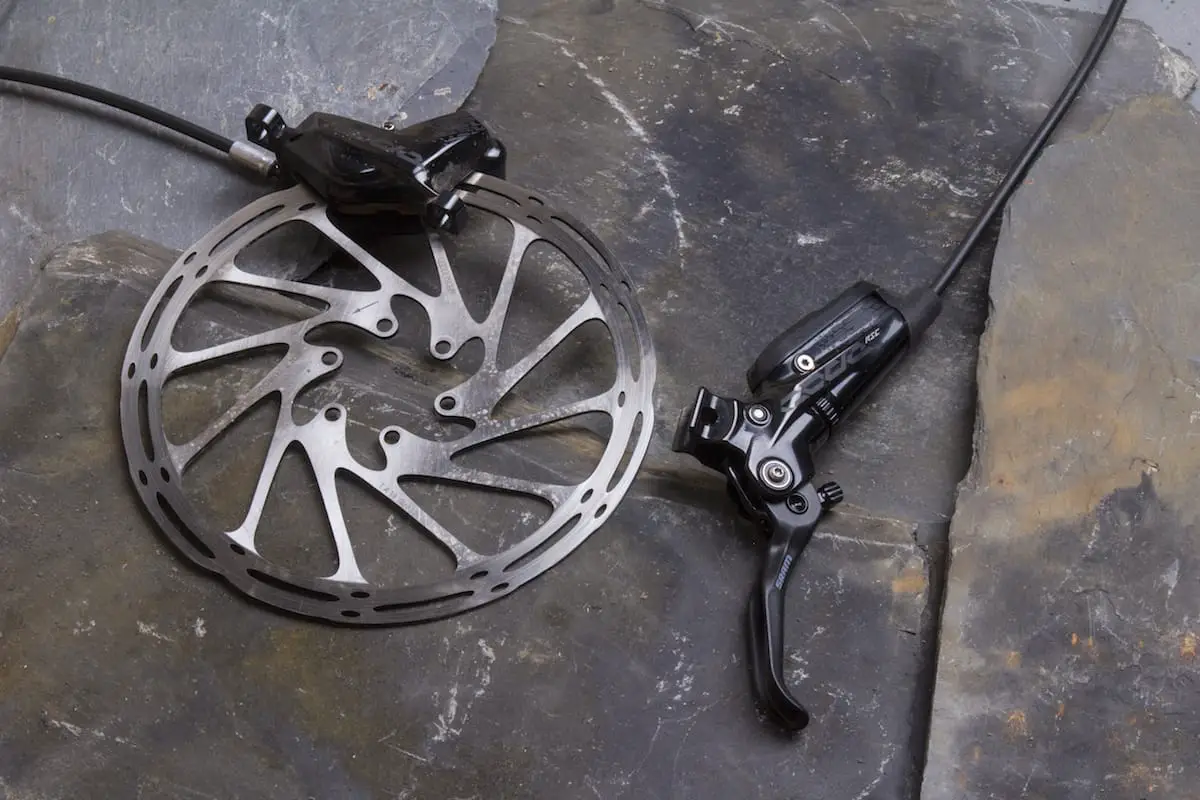
And the real story is……
SRAM brake lasts three days without breaking!
This seems a bit of a flawed group test. Billed as a test of “trail” brakes but the winner is a brake aimed squarely at downhillers. It seems unfair to mark brakes like the TRP and Hope down for lack of power when you aren’t testing those brands’ equivalent models.
@arogers – Apologies for the delayed reply on this, as we don’t get notifications for comments on articles, and we tend to lose track once they fall off the main page!
In answer to your comment, it was the Code’s modulation, feel, adjustability and ergonomics that saw them take out the Best Overall award. They are do doubt powerful brakes, but that wasn’t the only reason they won that award.
And just to clarify – neither the Hopes or TRPs were marked down for their power – they are both fantastic brakes in their own right. In fact, the TRPs modulation braking feel was one of the best out of the whole lot, though there were other issues that mean they didn’t quite manage to take an award in our group test.
If you get the chance, you can check out the full brake test feature via the link below, which includes links to each separate review;
http://singletrackworld.com/2017/12/stop-hammertime-we-test-8-high-powered-stoppers-in-our-disc-brake-group-test-to-find-out-which-is-best/
Hope that helps clarify things for you, but just give me a shout if you’ve got any other questions matey!
ST Wil.